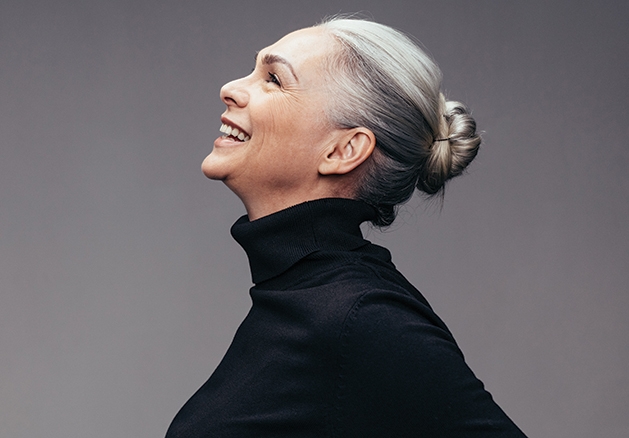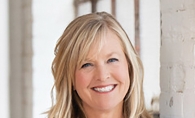
Confident. Authentic. Risk-taker. These are just a few words Laura Saatzer of Pine Springs uses to describe herself as she sports her new look—salt-and-pepper gray locks chopped just below her chin.
“It’s easy to stay with the norm, color it and keep fitting in,” Saatzer says. “But when you’re confident in who you are, [going gray] is one way to just be your real self.”
Saatzer is one of a growing movement of middle-aged women emboldened by shifting beauty standards in the wake of the pandemic to embrace their graying hair. As celebrities like Sarah Jessica Parker and Andie MacDowell stepped out of quarantine glowing with their naturally silver tresses, the world took note. Gray hair wannabes found their soul-sisters on social media, where hashtags like #GrayHairDontCare, #SilverSisters and #GrayHairRevolution stoked camaraderie and acceptance.
We spoke with Lisa Hronski-Blaisdell, a color specialist at Sunbear Salon & Medical Spa, about how she guides clients through the transition and what people can expect when they decide to go gray.
“We’re seeing so much more of [clients moving to gray] in our salon, and so much more of it in our industry,” Hronski-Blaisdell says. Aging fearlessly has become more possible than ever, she continues, as recent advances in silver coloring and toning products level the playing field for all shades of gray.
For women who want to ease into the transition, Hronski-Blaisdell explains that colorists can now use foil and toning products to gradually strip past color and achieve a shade that best suits their client’s skin tone and natural gray.
The process takes patience, Hronski-Blaisdell says, as the grow-out can take more than a year. But for a quicker route, she has also helped many bold women make the chop or even buzz, shedding their former cut and color to embrace their gray in one fell swoop.
Niki Eischens of St. Paul chose to go cold-turkey and simply stop dying her hair in her mid-40s. The grow out felt awkward at times, she says, but the result was worth it in the end.
“It’s really easy to get frustrated when you’re halfway through the process,” Eischens says. For women looking to switch, she recommends patience in the first six–12 months as hair adjusts.
She says, “You can always go back to dye, so why not give it a go?”
Regardless of how one chooses to go gray, Hronski-Blaisdell presses the importance of an updated hair care regimen. No head of gray locks is the same, but hair naturally becomes more dry, coarse and fine with age. Even the color and gloss can vary widely, from ashy silvers to matte dark grays.
“It’s key when you go home to have a good toning shampoo and conditioner,” Hronski-Blaisdell says. There are a variety of purple, blue and silver toning products on the market for at-home use. Toning can also be done periodically at a salon to remove unwanted brassiness, while glossing products and hair masks can both smooth and strengthen.
Ann Rooney of White Bear Lake says she has come to love the texture and look of her gray hair, which grew in at 45 following treatment for breast cancer.
“[My gray hair] is my crown,” Rooney says. “I earned it. And I’m going to be proud of it. And I’m going to wear it and wear it well.”
Lately, Hronski-Blaisdell has experimented along with her clients, letting her gray grow in bit by bit.
“I kind of like the change and the little edgy look,” she says. “I’m not trying to hide being old. I’m embracing it.”
Sunbear Salon & Medical Spa, 2207 Third St., White Bear Lake; 651.426.5884; sunbearspa.com
Sunbear Salon and Medical Spa
@sunbearspasalon









